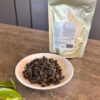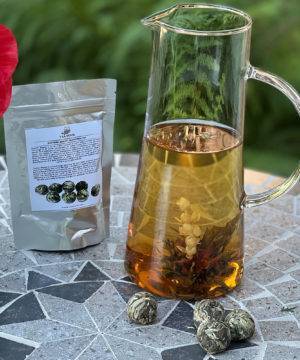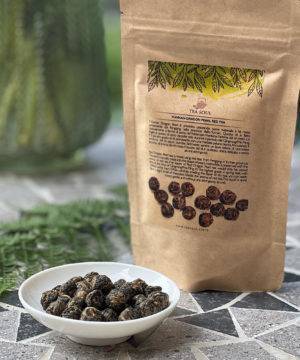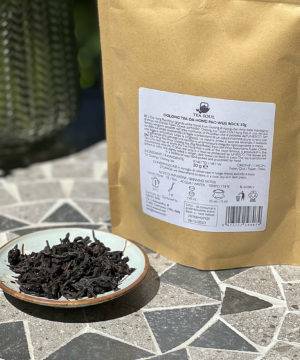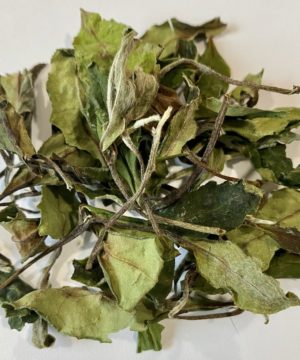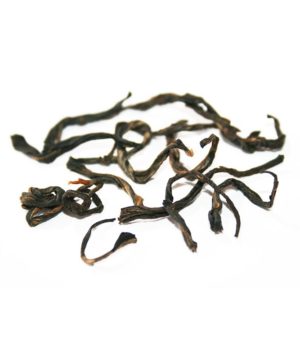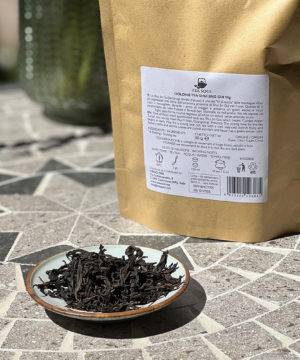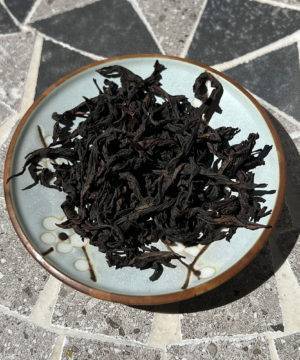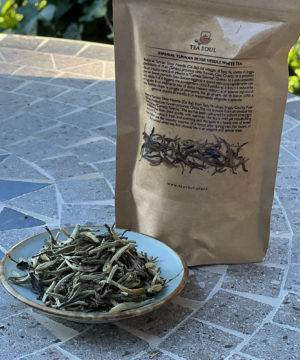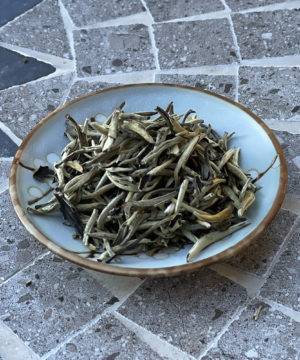



















Puer Shu (cooked) tea Menghai Chen Xiang 2019 357g
52.20€ Taxes included
The leaves of Menghai Chen Xiang 2019 puer shu (cooked) tea are grown in a small 30-year plantation, comes from the Menghai area and grows at an average altitude of 1,000 mt. It is a fermented tea with a complex organoleptic profile, with notes of underbrush and a balsamic vegetal freshness that transforms into sweeter hints on the finish. The body is enveloping and round on the palate, with a long persistence.
Out of stock
Notify me when it becomes available again
This site is protected by reCAPTCHA and the Google
Privacy Policy and
Terms of Service apply.
SKU: B1020712
Categories: Tea Ouer Shu, COLLECTIONS, Puer Shu Cotto, Tea, Puer tea
DON'T MISS DISCOUNTS AND NEWS!
Subscribe to our WhatsApp channel and receive all updates quickly and conveniently!
Subscribe to our WhatsApp channel and receive all updates quickly and conveniently!
The leaves Menghai Chen Xiang 2019 puer shu (cooked) tea come from the Menghai area located in the Yunnan region of deep south China. In order to better understand this product, it is necessary to investigate the area of origin of its leaves as, in most cases, it is the place of origin itself that gives the tea its name and main organoleptic qualities.
This puer, specifically, was grown and harvested in the mountainous area around the city of Menghai in the western part of Xishuangbanna Autonomous Prefecture. The leaves in question were carefully selected and pressed in spring 2019 by the Menghai Shenyu factory located in Menghai County. The indication on the factory where the leaves arrive is useful to emphasize that behind this puer is a certain style or type of research designed by a special group of tea masters to enhance the territorial characteristics of the product.
The infusion of this puer shu reveals a very complex and varied flavor profile. The first elements to present themselves during tasting are an earthy clay scent combined with an almost balsamic vegetal freshness. Subsequently, the more mineral part of this tea is perceived in the back of the throat, accompanied by a taste similar to that of somewhat burnt bread crust. After these initial flavors quite typical for puer shu, a sweet and slightly sour flavor reconnectable to the vegetable world and, in particular, to raw spinach and sorrel leaves begin to emerge at the back of the palate. The liquor overall has a fairly smooth body and leaves a pleasant warm sensation in the mouth.
Place of origin
Menghai – Yunnan, China
Production
After the harvest the leaves whither under the sunlight for a certain period of time depending on the tea masters evaluations before going into the “killing of the green” phase which is similar to the practice adopted for green teas. In this case, however, the leaves are heated in the iron wok with a lower temperature than the usual standards for a green tea so it is possible to preserve some enzymes capable of changing the the taste of the tea through the time. Once cooked, the leaves are taken in large quantities and stacked to form large piles. The vegetable mass thus arranged is then moistened and covered with cloths in order to retain heat and to start the fermentation process. The producer here have to move and wet constantly the leaves in order to achieve an homogeneous fermentation on all the vegetal mass. Once this process, which can last from 20 to 70 days, is finished, the leaves are spread and left to air. From here one can (eventually) proceed to press the puer in order to give it the best conditions to be transported and aged. To press the leaves, the producer exposes a certain quantity of the product to a strong steam jet for few seconds in order softened the vegetal mass and then wrap all up in a kind of sock or sac to imprint the final, usually discoid, form. To maintain the desired shape the sac is put under an heavy stones for several hours or under a mechanical press while the leaves loose the residual moisture caused by the steam in the previous phase.
How to prepare
We strongly recommend infusing this tea in the traditional Chinese method (Gong Fu Cha) with a gaiwan with a capacity of about 150 ml. By following this preparation, multiple infusions can be made with 5 grams of leaves that are useful to best capture all the flavor nuances of the tea.
Heat the water to a temperature of 95°C: proceed to briefly rinse the leaves and then to an initial 20-second infusion. Keeping the water at the same temperature, you can then continue to exploit the same leaves by adding more water and increasing the infusion time by 5 seconds each time (20 – 25 – 30 – 35…).
This tea has a longevity of about 10 infusions.
For a more classic preparation in the Western style, we recommend 3 grams of leaves in a 200-mL cup with 95°C water for a 3-minute infusion time.
For a better tasting experience, we suggest that you strain the tea as soon as the brewing time is over. The infusion timings we suggest can be slightly modified to your liking to achieve a more or less intense taste.
Store in a cool, dry place away from direct sunlight.
| Weight | 0.365 g |
|---|---|
| Dimensions | 0.000000 × 0.000000 × 0.000000 cm |
| Detail - Temperature | 95°C |
| Detail - Brewing | warming |
| Feature - Caffeine | Medium caffeine |
| Preparation - Gaiwan | 5gr x 150ml / 20-25-30… sec / 10 infusions |
| Preparation - Mug | 3gr x 200ml / 3 min / 2 infusions |
| Feature - Fermentation | Totally fermented |
| Other - Origin | China |
| Other - Taste | Vegetal / Sweet |
| Season |
Still no Reviews for this Product
Related products
9.20€ Taxes included
Earn up to 81 points.
This product has multiple variants. The options may be chosen on the product page
11.61€ Taxes included
Earn up to 82 points.
This product has multiple variants. The options may be chosen on the product page
12.80€ Taxes included
Earn up to 110 points.
This product has multiple variants. The options may be chosen on the product page
9.20€ Taxes included
Earn up to 41 points.
This product has multiple variants. The options may be chosen on the product page
6.90€ Taxes included
Earn up to 25 points.
This product has multiple variants. The options may be chosen on the product page
13.90€ Taxes included
Earn up to 28 points.
This product has multiple variants. The options may be chosen on the product page
10.40€ Taxes included
Earn up to 38 points.
This product has multiple variants. The options may be chosen on the product page
8.00€ Taxes included
Earn up to 30 points.
This product has multiple variants. The options may be chosen on the product page






